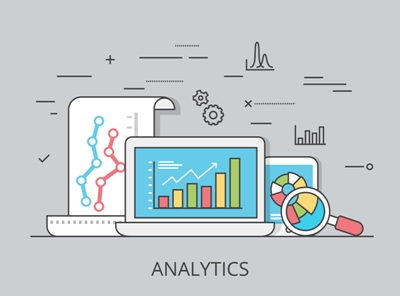Keeping your company at the forefront of its field means having the ability and confidence to...
 Analytics are nothing new, but what is new is how they are being used and how pervasive they are. Recent surveys show that more than 90% of organizations believe that using analytics more effectively will lead to important insights to inform decision making, and 49% of businesses said the biggest benefit of using analytics is improving decision making. The crux of the analytics movement is making better decisions and more organizations are moving towards a data-driven culture, but only about a third of organizations surveyed said they would describe their current culture as data-driven. So, where is the disconnect?
Analytics are nothing new, but what is new is how they are being used and how pervasive they are. Recent surveys show that more than 90% of organizations believe that using analytics more effectively will lead to important insights to inform decision making, and 49% of businesses said the biggest benefit of using analytics is improving decision making. The crux of the analytics movement is making better decisions and more organizations are moving towards a data-driven culture, but only about a third of organizations surveyed said they would describe their current culture as data-driven. So, where is the disconnect?
Data-Driven Decision-Making Culture
Maybe the best way to answer this question is to examine what it takes to have a data-driven culture with analytics at the heart of decision making. One of the key characteristics of a data-driven culture is transparency. The right people need access to data to perform the analysis they need to make better decisions and disjointed or locked down data does them no good. The dilemma this presents is adhering to data governance policies while still allowing access to the right information by the right people at the right time.
Some of the analytics tools that are currently in use by organizations who are maximizing their analytics function make it easier to strike the proper balance between transparency and compliance with data governance policies with well-defined user access policies and audit trails to ensure people can use only data they need and any changes to data are well documented.
Establishing Data as the Decision Driver
Another key characteristic an organization needs to have to extract the most out of their analytics is to cultivate data as a key decision driver. There are many approaches to decision making and among them are a variety of non-data driven methods. Decision by consensus, for example, is a common decision-making methodology that does not have data as a core decision driver. This is not to say that there is no merit in this method, but it is not compatible with a strongly data-driven decision making culture, so this is a big consideration. Changing the culture is not without some significant challenges, so plan accordingly and get a handle on the resources that will be required if a major culture shift is in order.
Get the Right People on the Team
Culture, by nature, has to do with people and having the right people on your team is critical to successfully establishing analytics as that key decision driver. That means hiring, training and retaining talent with the right set of skills and attributes. You will need analysts who are curious, eager to learn and flexible. Curiosity doesn't just mean asking questions. It means asking good questions, critically evaluating answers, and asking good follow up questions when necessary.
I recall being frustrated when I was managing financial analysts and I would see an explanation of a variance with phrases like "Variance due to volume increase". While it may be a factually correct answer, it does little to provide insight. Analysts must understand how to ask questions that lead to insights so they are empowering decision makers, not just reporting data.
An eagerness to learn is especially important in an environment that is constantly changing, as people need to learn new skills as they are required to adapt to new technology or circumstances. Whether you have a formal training program or knowledge and skills are shared informally, there must be a commitment to continual learning if you are to keep pace with top competitors. Not only is this important for your current employees to do their jobs well, but it is also important to keep them on your team at all as the business landscape at top companies gets more and more competitive. Demand for finance managers, for example, is expected to grow at nearly 20% per year, which is much faster than many other jobs.
If you recruit and retain top talent, establish a culture where data is a key decision driver and foster an environment of wisely planned transparency, you put yourself and your organization in a position to maximize your leverage on analytics to drive decisions that can improve business performance.
The article was first published in Unit 4 Prevero Blog
Subscribe to
FP&A Trends Digest

We will regularly update you on the latest trends and developments in FP&A. Take the opportunity to have articles written by finance thought leaders delivered directly to your inbox; watch compelling webinars; connect with like-minded professionals; and become a part of our global community.




